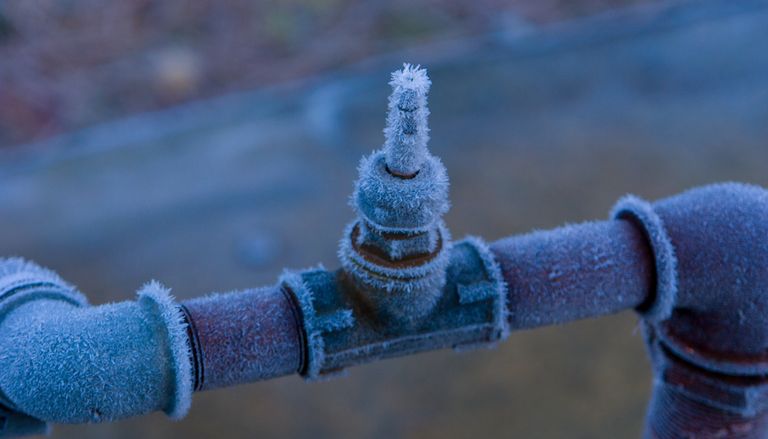Essential Methods for Avoiding Frozen Pipes in Winter
Essential Methods for Avoiding Frozen Pipes in Winter
Blog Article
Are you currently in search of facts on How to Prevent Your Pipes From Freezing?

Cold weather can ruin your pipes, especially by freezing pipes. Below's exactly how to avoid it from happening and what to do if it does.
Introduction
As temperature levels drop, the threat of icy pipelines rises, possibly leading to costly repair services and water damage. Understanding just how to avoid icy pipes is crucial for homeowners in cool climates.
Avoidance Tips
Insulating at risk pipes
Cover pipes in insulation sleeves or make use of heat tape to secure them from freezing temperatures. Concentrate on pipes in unheated or outside locations of the home.
Heating techniques
Keep indoor areas adequately warmed, particularly locations with plumbing. Open closet doors to allow warm air to flow around pipes under sinks.
Exactly how to recognize icy pipelines
Look for decreased water flow from faucets, uncommon odors or sounds from pipes, and noticeable frost on subjected pipelines.
Long-Term Solutions
Structural changes
Consider rerouting pipes far from outside wall surfaces or unheated areas. Add additional insulation to attic rooms, cellars, and crawl spaces.
Upgrading insulation
Invest in high-quality insulation for pipes, attics, and walls. Correct insulation aids preserve consistent temperatures and lowers the danger of frozen pipelines.
Securing Outdoor Pipes
Garden tubes and outside taps
Detach and drain pipes garden tubes before winter. Set up frost-proof faucets or cover outside taps with insulated caps.
Recognizing Icy Pipes
What triggers pipelines to freeze?
Pipes ice up when exposed to temperatures listed below 32 ° F (0 ° C) for expanded durations. As water inside the pipelines ices up, it expands, putting pressure on the pipeline wall surfaces and possibly causing them to burst.
Dangers and damages
Icy pipelines can cause supply of water disruptions, residential or commercial property damages, and expensive repair services. Ruptured pipelines can flooding homes and cause extensive architectural damage.
Signs of Frozen Piping
Recognizing icy pipelines early can prevent them from breaking.
What to Do If Your Pipelines Freeze
Immediate actions to take
If you presume icy pipelines, maintain faucets open up to ease stress as the ice melts. Make use of a hairdryer or towels taken in warm water to thaw pipes gradually.
Conclusion
Protecting against frozen pipes calls for proactive actions and quick actions. By comprehending the reasons, indications, and safety nets, property owners can shield their plumbing during winter.
5 Ways to Prevent Frozen Pipes
Drain Outdoor Faucets and Disconnect Hoses
First, close the shut-off valve that controls the flow of water in the pipe to your outdoor faucet. Then, head outside to disconnect and drain your hose and open the outdoor faucet to allow the water to completely drain out of the line. Turn off the faucet when done. Finally, head back to the shut-off valve and drain the remaining water inside the pipe into a bucket or container. Additionally, if you have a home irrigation system, you should consider hiring an expert to clear the system of water each year.
Insulate Pipes
One of the best and most cost-effective methods for preventing frozen water pipes is to wrap your pipes with insulation. This is especially important for areas in your home that aren’t exposed to heat, such as an attic. We suggest using foam sleeves, which can typically be found at your local hardware store.
Keep Heat Running at 65
Your pipes are located inside your walls, and the temperature there is much colder than the rest of the house. To prevent your pipes from freezing, The Insurance Information Institute suggests that you keep your home heated to at least 65 degrees, even when traveling. You may want to invest in smart devices that can keep an eye on the temperature in your home while you’re away.
Leave Water Dripping
Moving water — even a small trickle — can prevent ice from forming inside your pipes. When freezing temps are imminent, start a drip of water from all faucets that serve exposed pipes. Leaving a few faucets running will also help relieve pressure inside the pipes and help prevent a rupture if the water inside freezes.
Open Cupboard Doors
Warm your kitchen and bathroom pipes by opening cupboards and vanities. You should also leave your interior doors ajar to help warm air circulate evenly throughout your home.

Do you really like more info about Preventing and dealing with frozen pipes? Place feedback below. We will be happy to see your ideas about this write-up. In hopes that you come back again later on. Do you know about somebody who is interested by the subject? Take a moment to share it. I appreciate reading our article about Prevent Frozen Pipes .
Services Report this page